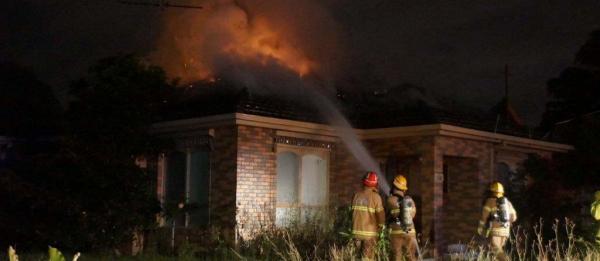By Mikayla van Loon
Residents throughout the Dandenong Ranges and foothills got their first glimpse of winter over the weekend of 10 April as temperatures plummeted and snow fell.
It’s probably safe to say that summer is well and truly over.
And even though saying goodbye to Melbourne’s lovely summer weather may be disappointing, keeping warm and staying safe in winter is just as important as applying sunscreen.
CFA firefighters are urging people to be mindful of the risks of in-home fires related to heating systems as they reach for that control panel to turn up the heat.
With the increased use of open fires, wood heaters, fixed electrical and gas-powered appliances and portable electrical heaters or those that use gas or kerosene, CFA Chief Officer Jason Heffernan said autumn and winter are the highest-risk periods for residential fires in Victoria.
“Many residential fires that result in fatalities or serious injuries start in lounge and sleeping areas,” he said.
“Many of these fires are found to be caused by heating systems, appliances and equipment.”
Mr Heffernan asks that people remember to turn off their heaters and never leave portable heaters or fireplaces unattended, as well as making sure all embers are extinguished before going to bed.
Smoke alarms should be installed and working in all sleeping and living areas.
Each year in Victoria, around 3000 house fires occur on average, most of which could have been prevented with simple acts and preventative measures.
Efficient Air Heating and Air Conditioning owner Jason Whittaker said every heating unit is different and may have different servicing requirements.
“We would recommend going to the Energy Safe Victoria website to see how this might affect you,” Mr Whittaker said.
Since the weekend, Mr Whittaker said he has been overrun with messages and has had over 100 calls for servicing and installation of heating units.
“As soon as the cold weather hit, I knew we were coming into an onslaught,” he said.
Although booked out for the next two weeks, Mr Whittaker said he will try to fit in as many smaller jobs, like change over heaters, to ensure people have heating during the cold weather.
But even though preventing fires can come from heater servicing, Mr Heffernan advised that a number of fires started due to items, like clothing, being placed too close to the heat source.
“Last year, CFA found that the lounge and bedroom areas were the most common room of fire ignition for incidents resulting in serious injury or death,” Mr Heffernan said.
“Most of these lounge room fires are caused by heating systems too close to combustibles.”
Mr Heffernan also said carbon monoxide poisoning is a greater risk for poorly maintained gas heaters.
“There should be no greater reason to have your gas heater inspected and serviced than to ensure the safety of loved ones,” he said.
“We have seen tragic consequences of this in the past.”
For more information visit https://www.cfa.vic.gov.au/plan-prepare/fires-in-the-home.
Heating safety tips
– Ensure heaters are installed, maintained and operated according to manufacturer’s instructions.
– Turn off all heating devices before leaving home or going to sleep.
– Drying clothes and other items must be kept at least one metre away from all heating.
– Children must be supervised near all types of heating. Maintain a safe distance between Children and heating.
– For portable heating appliances choose models that have automatic safety switches that turn the heater off if tipped over.
– Keep portable electric heaters away from wet areas to avoid the possibility of electric shock.
Open fire safety tips
– Always use a fire screen in front of an open fire.
– Ensure ashes are cold before discarding.
– Chimneys and flues should be cleaned annually.
– Keep wood and other combustibles at least one metre away from fire.
– Only burn dry, clean wood.
– Brick chimneys and gas heaters should be checked before winter to prevent fires and carbon monoxide poisoning.







